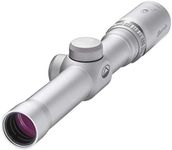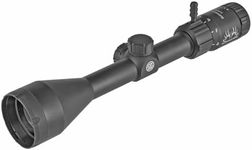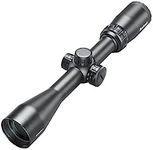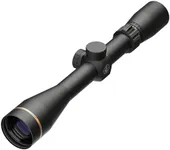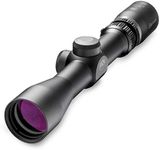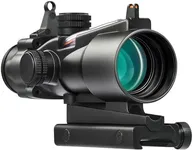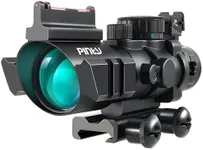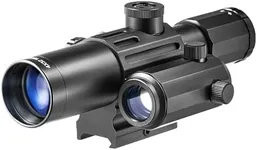Buying Guide for the Best Handgun Scope For Hunting
Choosing the right handgun scope for hunting can significantly improve your accuracy and overall hunting experience. The right scope will help you see your target more clearly, especially in low-light conditions, and can make a big difference in your shooting performance. To find the best fit for you, it's important to understand the key specifications and how they relate to your specific needs and hunting conditions.MagnificationMagnification refers to how much closer the target appears through the scope compared to the naked eye. This is important because it helps you see your target more clearly, especially at longer distances. Scopes typically have fixed or variable magnification. Fixed magnification scopes are simpler and often more durable, while variable magnification scopes offer more flexibility. For handgun hunting, a magnification range of 2x to 8x is usually sufficient. If you hunt in dense woods or at shorter ranges, lower magnification (2x-4x) is ideal. For open fields or longer distances, higher magnification (6x-8x) may be more appropriate.
Objective Lens DiameterThe objective lens diameter is the size of the front lens of the scope, measured in millimeters. This spec is important because it determines how much light the scope can gather, which affects image brightness and clarity. Larger objective lenses (28mm-32mm) gather more light, making them better for low-light conditions like dawn or dusk. However, they can also make the scope bulkier and heavier. For handgun hunting, a balance between light-gathering ability and portability is key. A diameter of 20mm-32mm is generally suitable.
Reticle TypeThe reticle, or crosshair, is the aiming point you see when looking through the scope. Different reticle types can suit different hunting needs. Simple crosshairs are easy to use and good for general hunting. More complex reticles, like those with bullet drop compensation (BDC) marks, can help with long-range shooting by indicating where the bullet will land at various distances. Choose a reticle that matches your hunting style and the distances you typically shoot. If you hunt in varied terrain, a BDC reticle might be beneficial. For straightforward, close-range hunting, a simple crosshair will suffice.
Eye ReliefEye relief is the distance between your eye and the scope at which you can see the full field of view. This is crucial for handguns due to their recoil. Longer eye relief (10-20 inches) helps prevent the scope from hitting your face when the gun recoils. For hunting handguns, look for scopes with at least 10 inches of eye relief to ensure safety and comfort. If you use a high-recoil handgun, prioritize scopes with the maximum eye relief available.
Durability and Weather ResistanceDurability and weather resistance are important because hunting often involves harsh conditions. A durable scope can withstand bumps, drops, and rough handling. Look for scopes made from high-quality materials like aircraft-grade aluminum. Weather resistance ensures the scope performs well in rain, fog, and varying temperatures. Features like waterproofing, fog-proofing, and shock resistance are essential. Choose a scope that can handle the specific environmental conditions you hunt in, ensuring it remains reliable and functional.
Parallax AdjustmentParallax adjustment helps ensure that the reticle stays on target even if your eye position changes slightly. This is important for accuracy, especially at longer distances. Some scopes come with fixed parallax, while others offer adjustable parallax. For handgun hunting, fixed parallax at a reasonable distance (50-100 yards) is often sufficient. If you plan to shoot at varying distances, an adjustable parallax feature can be beneficial. Consider your typical shooting range and choose accordingly.


